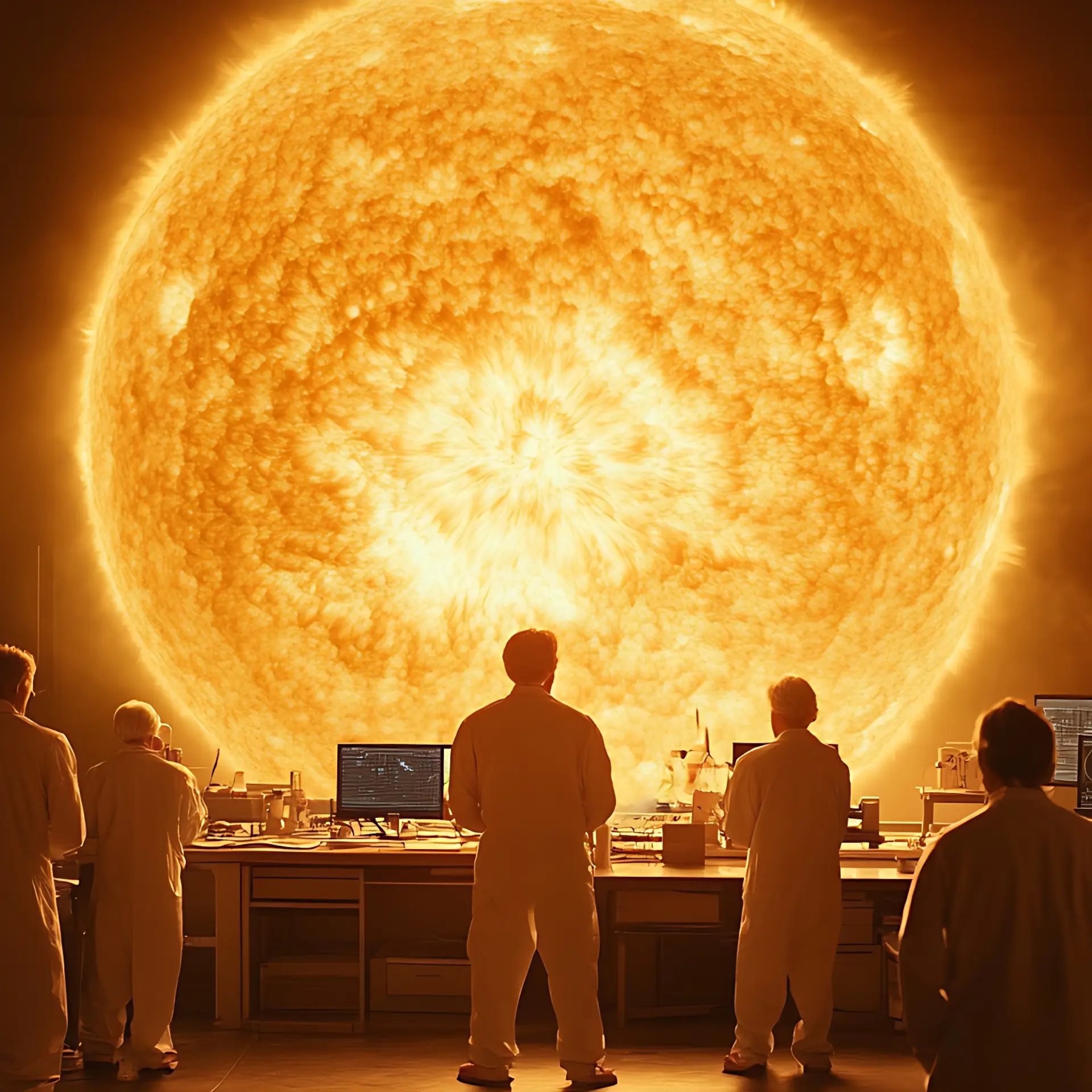The Sun on Earth: Fusion Power, Altman’s Vision, and the Race to Energy Independence
Fusion energy, backed by tech visionary Sam Altman, could be the game-changer the energy sector needs, offering limitless clean power for the future. Discover how Helion Energy is making this bold vision a reality—read more to find out!
The quest for a sustainable, future-proof energy source has led to a significant buzz around fusion energy—an area attracting heavy investment and intellectual capital, including from tech heavyweights like Sam Altman, CEO of OpenAI. But what exactly is fusion energy, and why is it considered a game-changer for the future of the energy sector?
What is Fusion Energy?

Imagine you're sitting by a campfire. The fire burns bright, giving off warmth and light. Now, think about the Sun—our giant campfire in space. The Sun shines because of something called fusion. Fusion is when super tiny particles (called atoms) smash together so hard and fast that they "fuse" or join, releasing a lot of energy. This is like fireworks on a huge scale!
Fusion happens when the smallest types of atoms, like hydrogen (the stuff in water), get squeezed together under extreme heat—over 100 million degrees Celsius! When these atoms collide at such high temperatures, they combine to form a new atom, and this process releases a huge burst of energy. It’s like a super-duper power-up!
Unlike the energy we use today (from things like burning coal or natural gas, which can pollute the air), fusion energy is clean. It doesn't produce harmful waste and there's a lot of fuel for it in nature. It’s like having a campfire that never runs out of wood and doesn’t make smoke!
Now imagine replicating the process that powers the Sun—right here on Earth.
Is Fusion Energy Sustainable?
Fusion is often described as the "holy grail" of energy production. It offers a virtually limitless supply of clean energy since its primary fuels, isotopes of hydrogen such as deuterium and tritium, are abundant or can be extracted from water and lithium. Furthermore, fusion generates significantly less long-lived radioactive waste compared to fission and has no risk of a catastrophic meltdown.
However, achieving practical, sustainable fusion energy has been notoriously challenging due to the extreme temperatures and conditions required to force atomic nuclei together—over 100 million degrees Celsius, to be exact. Despite these challenges, recent technological advancements suggest we are closer than ever to making fusion energy a reality.
Why is Fusion Energy Considered Future-Proof?
Fusion Energy promises a future of energy independence and security. It offers a clean, zero-carbon alternative to fossil fuels, essential for combating climate change. If harnessed successfully, fusion could provide a consistent and reliable energy source, unaffected by weather or geopolitical tensions, which often disrupt current energy supplies like oil and gas.
The Science Behind Fusion Energy
To generate fusion, you need a machine that can create an incredibly hot environment where atomic nuclei can collide with enough force to fuse. Helion Energy, a promising startup in this sector, has developed a unique approach using a pulsed non-ignition method. Their latest prototype, Polaris, aims to be the first fusion device to produce net electricity by 2024. Unlike traditional fusion reactors that use heat to create steam and drive turbines, Helion uses an electromagnetic approach, claiming it is more efficient and allows for direct electricity generation from the fusion process. Their technology has already demonstrated a 95% energy recovery rate from fusion reactions, showcasing its potential for high efficiency and scalability.
Sam Altman’s Bet on Helion Energy

In July 2024, Sam Altman, the tech entrepreneur known for his role at OpenAI and as a former president of Y Combinator, doubled down on his investment in Helion Energy. Altman led a $500 million Series E funding round for Helion, with an additional $1.7 billion contingent on the startup hitting key milestones. This investment marks one of the largest bets on clean energy to date. Altman’s belief in Helion's mission is fueled by the company’s innovative approach and progress toward making fusion energy commercially viable.
Helion plans to generate electricity at a cost of about $10 per megawatt-hour—significantly lower than most current energy sources, including coal and solar power. This could make fusion not just a clean option, but also an economically competitive one, attracting more private-sector investments and interest.
What Does an Entrepreneur's Involvement in Fusion Energy Mean?
When entrepreneurs like Altman invest heavily in fusion, it sends a clear message: this technology is no longer a distant dream but a viable pathway to a sustainable future. Their involvement can accelerate progress by leveraging their networks, raising public awareness, and attracting additional capital. It also reflects a broader trend where tech leaders are expanding their focus beyond digital innovations to include groundbreaking advancements in energy, climate, and sustainability.
Fusion Energy—A Reality or Still a Dream?
While fusion energy has long been considered “always 30 years away,” the landscape is shifting. Companies like Helion, backed by tech giants and venture capital, are making significant strides toward proving that Fusion can deliver on its promise of limitless, clean energy. With plans to demonstrate net electricity production by the end of 2024, Helion and its backers like Sam Altman are bringing us closer to a future where fusion could become a cornerstone of the global energy system.
Edited by Rahul Bansal







